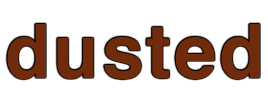



 |
|
 |
|
 |
|
 |
|
|
||||||
| |||||
|
|
||||||||||||||||||||||||||||||||||||||||||
|
It would be easy to attribute Terror Sheets’ brand of drowsy rock music to the coastal dreariness that descends upon their native Seattle late in the year. I’m reluctant to do that because I’ve just moved to Seattle and sincerely hope that the winters are not that bad, but I get the distinct sense that Street Corner Fields – which was recorded at the end of 2002 – was assembled as it was because it sounded good at a time when the nights came on early and never really went away, and the rain blurred the horizon between the ocean and the overcast sky into one indistinct mass of steely gray. A depressing thought as winter gets closer and closer, but a constantly present one nonetheless.
Regardless of its particular geographic origins, the nine songs on Street Corner Fields betray the moodiness and weariness of late fall and winter; not sad, necessarily, but certainly morose, even if the brooding leads to the occasional, fleeting, happy thought. Mood albums – and in particular those mood albums meant to lend themselves to darker moods – usually set about their purpose through overbearing atmospherics; everything is recorded and mixed just so in order to convey the right feeling of restraint and austerity. Terror Sheets and producer Mike Epting took the opposite approach, stripping away excess instrumentation and studio flourishes in order to make the album sound like the artifact of three musicians at work in a variety of spaces. Rather than striving for acoustic perfection and creating the right sense of intimacy, Street Corner Fields sounds like it was recorded in an empty loft, or a stairway (part of it apparently was), and the echoes are reminders of the loneliness of open spaces.
The approach can be appealing at times – there is always something to be said for live recording, or at the very least for creating the feeling of live recording. Since Terror Sheets tends to build its songs out of the kind of repetitive instrumental interactions that play better in concert than on an album, it was wise to go with an unvarnished sound. “Sword”, actually one of the more up-tempo songs on Street Corner Fields, sits on the same two guitar chords for its entire length. Indeed, the only effect is that lead singer Joe Syverson plays the chords louder and louder while singing the songs refrain – “all you’ve got is all you saw” – at a similarly increasing volume, before slyly changing their meaning – “all you’ve got is all you saw away.” It’s not a perfect melody or a brilliant lyric, but the song’s main strength is that its songwriters seem to know this, and conclude before it exhausts its own potential. It ends after a minute-and-a-half, just long enough to seem clever, not nearly long enough to become tiresome.
Other songs depend upon the rush of live performance. “What This Means” wallows in lazy guitar strumming and garbled vocals before the full band helps pull everything together. The song suddenly slips into high gear and the bridge turns into an extended instrumental skein that fleshes out the opening chords. Sometimes nothing substitutes for having three musicians working in the same room, acoustic precision be damned.
Other songs were not so fortunately constructed. “24” suggests the worst excesses of the grunge era – a comparison inspired by the band’s home city, yes, but also by the slightly out-of-sync pounding of the drums, the hairpin guitar transition from acoustic to electric, and Syverson’s unabashed wailing. We’re used to a bit more subtlety when listening to rock and roll atmospherics; a sense of deliberation, the sense that this is not just an easy and bombastic way of bringing us down, would help a song like “24.” But it just isn’t there.
“Some Roads” suffers from its muddy production. Put another way, it suffers from having incomprehensible vocals. I can only suppose that the marble-mouthed recording of some of the songs was intentional, as most such post-Psychocandy vocals attempt to reward a careful listener. Usually, however, indecipherable vocals are the result of singing at half voice or even softer. Singing too softly is not Syverson’s problem. His vocals are forceful but indistinct and they mar the songs like blurred motion in the center of a still photograph. “Some Roads” is perhaps the best example of this; it sounds flawed rather than intriguing, and instead of wondering about the recording process I am left wondering why an outtake made it onto the final album master.
Street Corner Fields goes back and forth just like this. Some songs are too reminiscent of one another and sound like contrived mood pieces; some songs are beautifully melancholic, like watching the night sky from the window of a speeding car. The album as a whole is less frustrating than a song-by-song comparison might indicate, perhaps because the highlights have a way of lingering, or perhaps because pardons for inconsistency come easier on a first album. Terror Sheets may continue to hit and miss, but there’s every reason to think that their formula will work. By Tom Zimpleman
|
|||||||||||||||||||||||||||||||||||||||||
| |||||